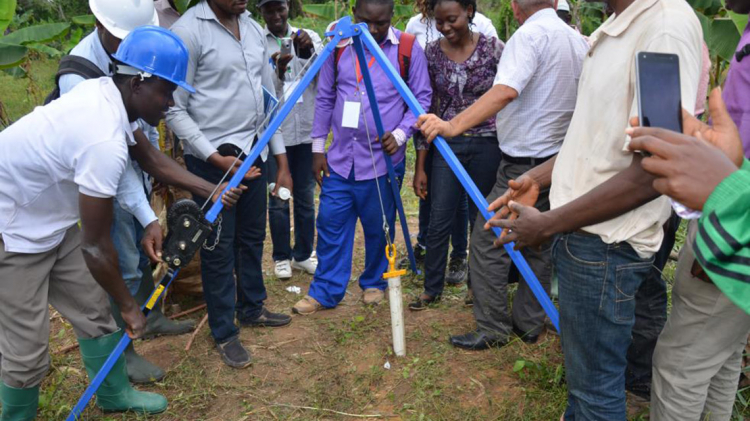Scientists, field and laboratory technicians from Cameroon have been trained to carry out field trials to identify crops with high biological nitrogen fixation, and high nitrogen and water use, during a two-week course in Yaoundé. The training will ultimately help farmers in Cameroon to cut fertilizer and water use whilst sustaining crop yields in integrated cropping systems.
Cameroon’s agricultural sector is under pressure due to an increasing demand for food as a result of the country’s rapidly growing population. Subsistence farmers in Cameroon have been using a mixed cropping system for many years. In traditional cocoa-based mixed cropping systems, for example, annual cereal crops, semi-annual plantain and cassava and perennial fruit tree crops, cocoa, and coffee are grown together. This kind of mixed cropping is very productive, but intensive cultivation and rapid soil nutrient mining, especially for secondary and micro-nutrients, has led to a decline in crop productivity and an increase in land degradation.
Information about individual crop nutrient requirement and uptake, and soil-water-nutrient interactions, will help farmers to optimize nutrient and water use and improve crop productivity while maintain soil health. Nuclear and isotopic techniques offer a useful approach to gathering this key information, to help Cameroon to address low soil fertility and water scarcity, thus improving food security and sustaining the natural resource base.
The IAEA, in cooperation with the Food and Agriculture Organization of the United Nations (FAO), is providing support to Cameroon’s Institute of Agricultural Research and Development (Institut de Recherche Agricole pour le Développement, IRAD) with a national project[1] aiming to improve the productivity of the integrated cereals-plantain-tree cropping system by building national capacity to monitor soil nutrient and water dynamics using isotopic methods.
The two-week training course in Yaoundé, which took place at IRAD from 21 August to 1 September 2017, was provided within the framework of this project. Twenty-five IRAD staff members, including scientists, field and laboratory technicians from IRAD Headquarters and all IRAD outstations, attended the course.






